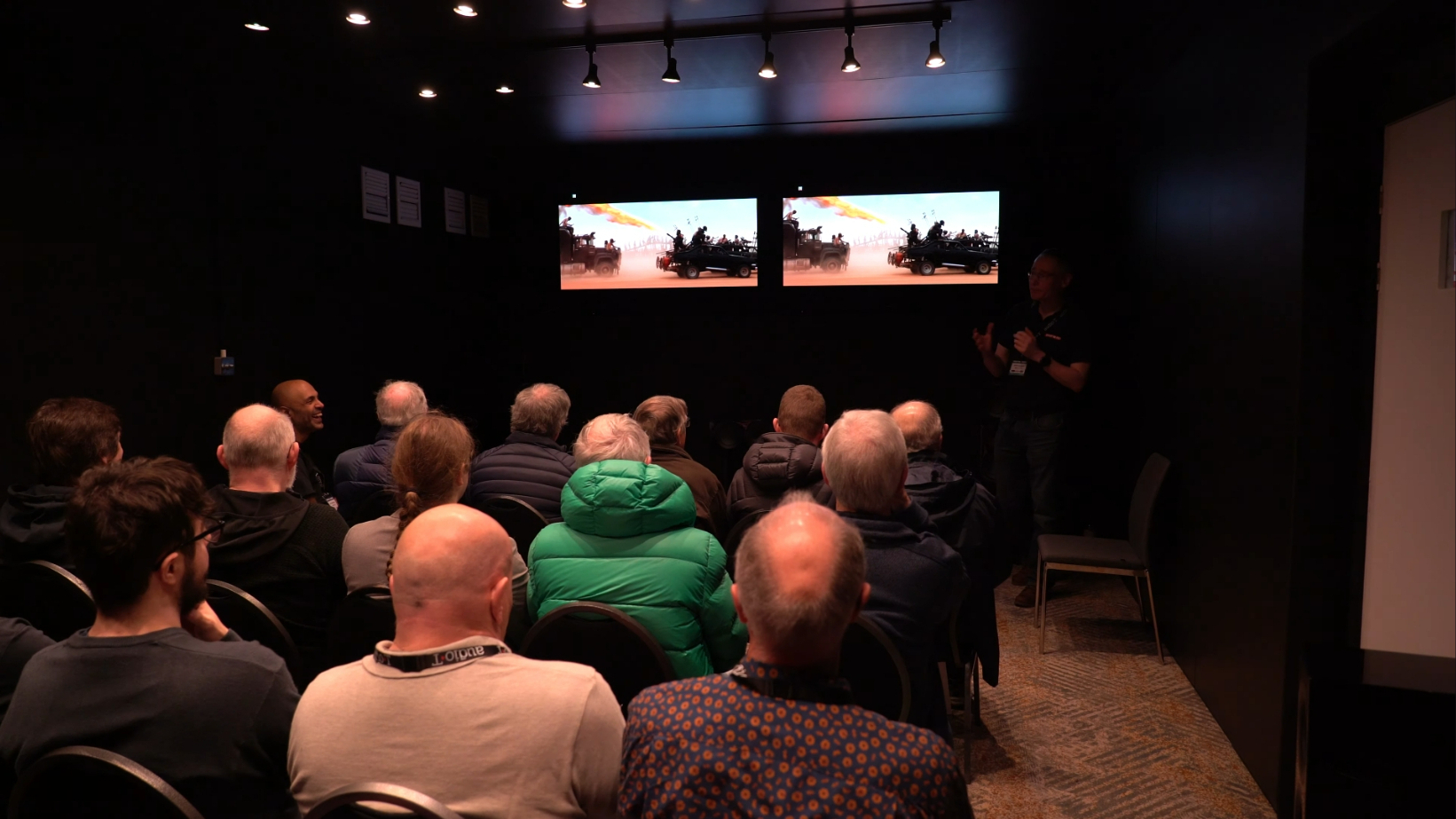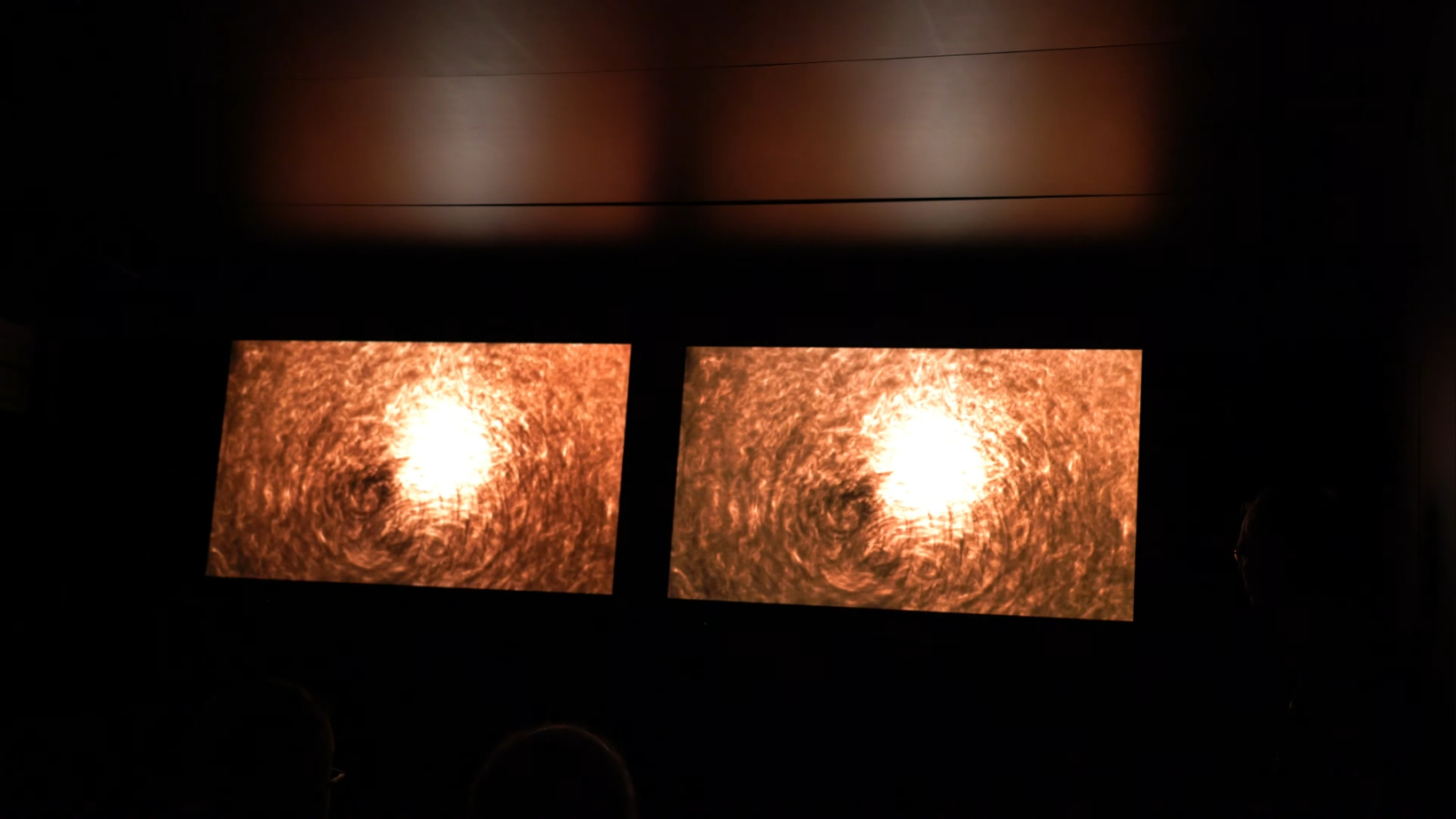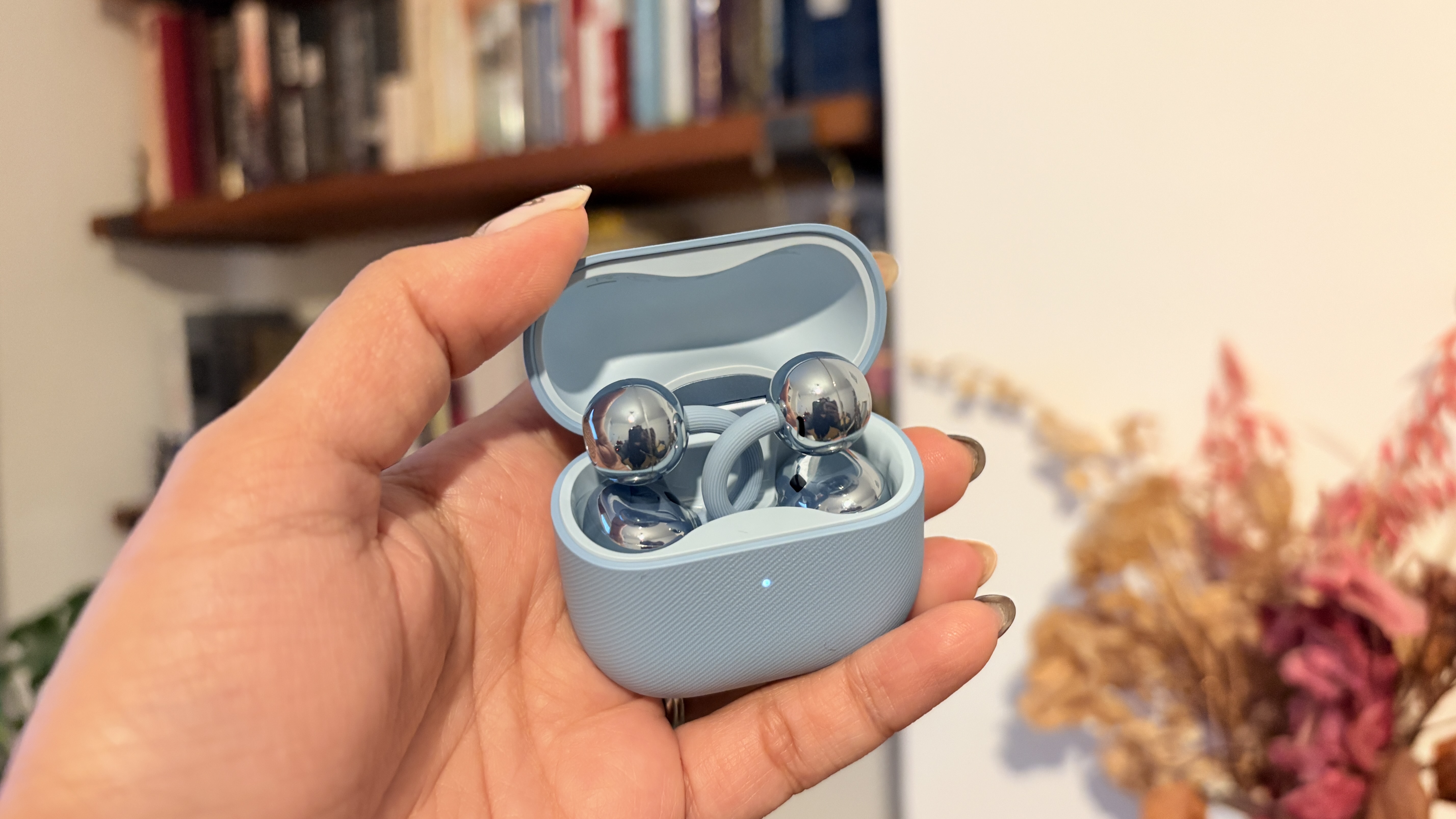I spent a weekend with a five-star Panasonic OLED and it's changed how I feel about Micro Lens Array
Our Bristol Hi-Fi Show demo was another OLED extravaganza

Another year, another Bristol Hi-Fi show – and wasn't it great to be back in the South West of England to take a gander at the latest audio announcements?
We don't want to blow our own trumpet too loudly, but we reckon our demo was up there with the very best on show, although my personal bias for home cinema and TVs might be showing there. Outfitted with two five-star Panasonic OLED TVs (the MZ1500 and MZ2000 to be specific), the Arcam AVR31 home cinema amplifier and a particularly nice R-Series 7.1 home cinema surround sound speaker package from KEF, the What Hi-Fi? demo was probably the most cinematic experience at the show.
Enough patting our own backs, because there is a point to this self-indulgent ramble, if you can believe it. I spent the latter portion of my time at the show driving this demo, which featured clips from Mad Max: Fury Road, The Matrix (the 4K UHD Blu-ray Remaster from 2018), and the mesmerising Nolan flick, Oppenheimer. Watching those clips on repeat on these two TVs for hours on end gave me time to mull over my thoughts on Micro Lens Array (MLA), the next-generation OLED screen technology that features on the MZ2000.
I'll lay my cards on the table here: I haven't been the biggest fan of MLA OLED technology up until this point. I have had brief stints in front of the Panasonic before, and more recently the Philips OLED908. While both are exceptional TVs in their own right, I haven't felt as though they have outperformed their non-MLA counterparts to a justifiable degree when you take into account the price disparity.
My biggest gripe with MLA OLED is the colour presentation. With both the Panasonic and Philips sets I have seen, I've found the picture leans toward a more yellowish and often paler skew. It draws out far too much warmth in skin tones for my liking; a prime example from our demo is a shot from Oppenheimer in which Cillian Murphy's titular scientist stares directly into the camera.
On the MZ1500 (a TV I find difficult to find flaws in), there is a noticeable variation in his skin tone, with a slightly more rosy appearance to his cheeks, whereas the MLA-equipped MZ2000 takes this out of the equation, leaving poor J. Robert Oppenheimer looking somewhat sickly. Admittedly I haven't seen the LG G3 in the flesh, although I'm eager to see the LG G4 as LG's picture processing might be more to my taste.
I wasn't the only one who thought this, however; many people at the demo expressed the same concerns to me. Feedback surrounding the slightly pasty skin tones and sepia-skewed whites caught my attention, as I assumed I was in the minority in this regard.
The latest hi-fi, home cinema and tech news, reviews, buying advice and deals, direct to your inbox.

Interestingly, comments from our demo from last year, in which we compared the Sony A90K OLED with the Sony A95K QD-OLED were nearly the exact opposite. While the A95K was (and still is) an excellent TV, we had to agree with attendees of our 2023 demo who took issue with the warmer presentation that the A95K provided. Skin tones on that set looked a bit too overdone, with perhaps a bit too much ruddiness in Maverick's cheeks in our Top Gun demo scene. That being said, between the two screen technologies, I tend to prefer QD-OLED, especially if we're talking about the supremely talented Sony A95L.
So, could there be a sweet spot? It's entirely possible, although with both screen technologies constantly evolving, we could see better-balanced colours on the upcoming 2024 releases; I am certainly excited to get more hands-on time with the likes of the Panasonic Z95A, Philips OLED909 (both MLA), Samsung S95D (QD-OLED) and whatever Sony has up its sleeve.
It might sound as though my experience with the MZ2000 wasn't enjoyable but, if you can believe this plot twist, my weekend spent with the set made me like MLA more. Whether that was the content we showed off or the expert input from our magazine editor, Jonathan Evans, and TV and AV editor, Tom Parsons, I actually softened my stance on MLA after seeing its other benefits.
Mad Max: Fury Road is a film I should have watched on one of these sets sooner, as quite frankly it's never looked better (unless we're talking about an IMAX cinema of course). This film was mastered at a whopping 4000 nits, however, its demanding brightness was no challenge for the MZ2000.
The enhanced brightness of this set was truly at the forefront of this film, with the spouts of fire that shot from flamethrowers, exhaust pipes and (most famously) an electric guitar being staggeringly bright. In a later demo scene from The Matrix, the white backdrop of "the construct" is noticeably much brighter and bolder on the MZ2000 despite the scene being mastered in 1000 nits, which both TVs are nominally capable of handling. However, even if you're not pushing these TVs to their absolute limits, it's clear that MLA has an advantage when it comes to brightness.
This is contrasted (pun intended) with how the TV handles darker parts of the picture. Back to Mad Max, we paused on a shot of the War Boys firing off what appeared to be some form of paint or chalk flares. The clouds of dust were clearly more varied with greater subtleties to be found within the shades of red, and the darker parts of the clouds had much more detail. This film is characteristically punchy when it comes to colours, which means the golden sands of the desert and the teal sky look positively gorgeous on this MLA set too.
This boost in contrast is also worth its weight in gold when it comes to three-dimensional impact. The aforementioned clouds of dust are striking, while the overall depth of the image is palpable. An elevated shot stretching far into the desert is crisp and tangibly three-dimensional.
Ultimately, after watching the demo more times than I can count, I found myself warming to the MLA model. If I'm being completely honest, the MZ1500 is still the TV I would buy of the two. That being said, MLA is still in its infancy and I'm even more receptive to it changing my mind with new generations.
More brightness isn't always the make or break feature of a TV, with industry professionals in Hollywood even stating that TVs that hit brightness figures in the thousands don't make sense. That being said, I certainly saw some benefits during my time with this MLA set, as did many people who joined us for our demonstration. Of course, we'll have to wait until the upcoming 2024 sets are in our TV and AV testing before we can pass judgment on second-generation MLA screen technology.
MORE:
Here are the 11 coolest things we saw at Bristol Hi-Fi Show 2024
Check out our full Panasonic MZ2000 review
As well as our Panasonic MZ1500 review
And our overall picks for the best TV
Lewis Empson is a Senior Staff Writer on What Hi-Fi?. He was previously Gaming and Digital editor for Cardiff University's 'Quench Magazine', Lewis graduated in 2021 and has since worked on a selection of lifestyle magazines and regional newspapers. Outside of work, he enjoys gaming, gigs and regular cinema trips.
